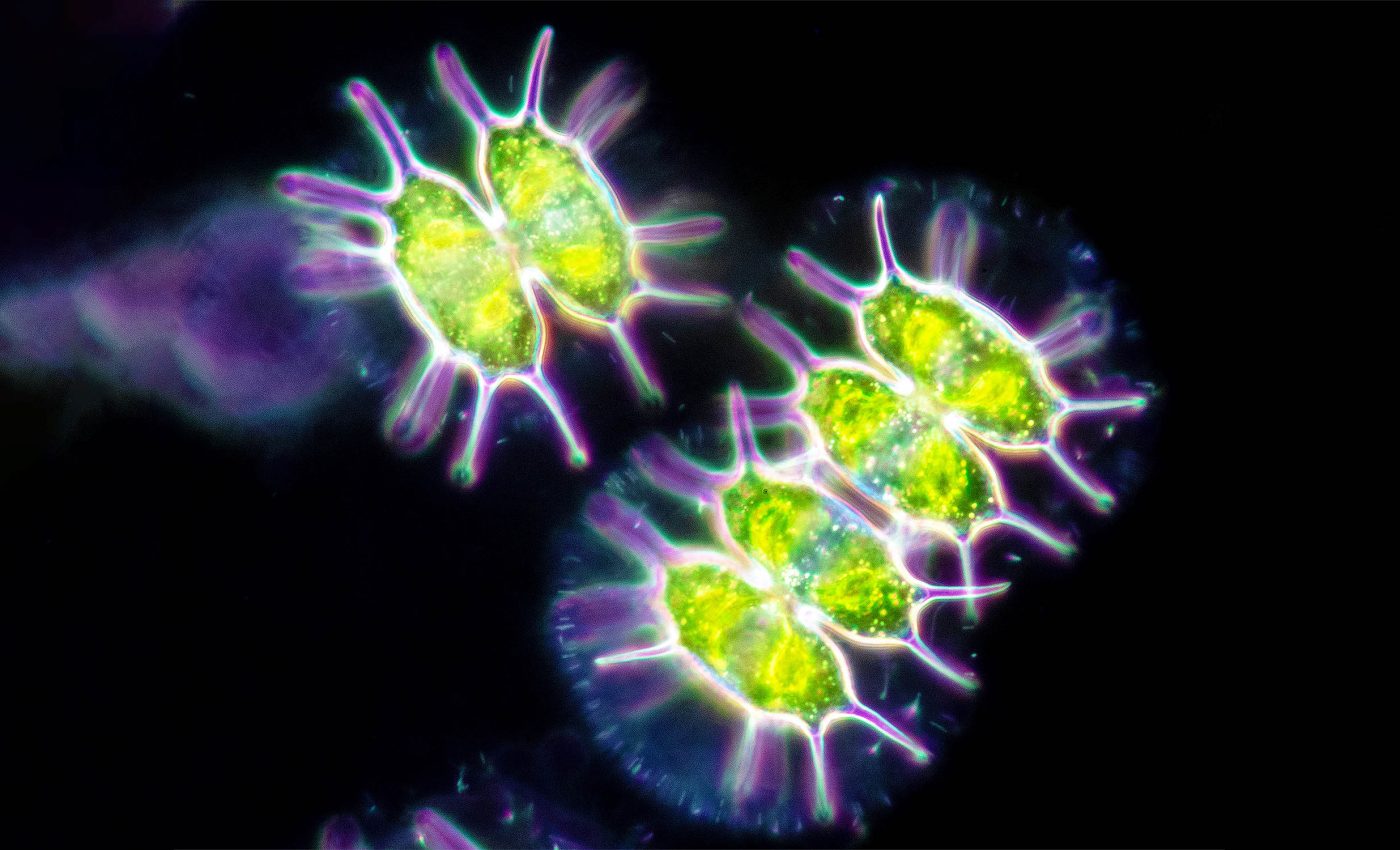
Arctic microalgae show photosynthesis is possible in near darkness
Can you imagine thriving in darkness? Humans certainly can’t, but some tiny organisms in the Arctic do just that. Organisms like microalgae can exist under the thick ice and snow cover of the icy Arctic Ocean.
These microscopic plant-like organisms defy our understanding of life as they carry out photosynthesis, a light-dependent process, in almost total darkness. It’s as fascinating as it sounds.
Arctic microalgae survival
The ability of the pint-sized Arctic microalgae to carry out photosynthesis under minuscule light conditions has been the focus of a recent international study.
The researchers found that, contrary to prior belief, photosynthesis in oceans can occur under significantly reduced light conditions and at much deeper depths.
Magic of photosynthesis
Photosynthesis is the process plants use to convert sunlight into a form of energy that sustains life. This vital process is fundamental to all life on earth.
Previous studies suggested that a certain amount of light was required for photosynthesis – significantly more than what is theoretically the bare minimum. Well, it turns out that we may have been selling photosynthesis short.
MOSAiC expedition and Arctic microalgae
The data for this study came from the MOSAiC research project. This is the same project that froze the German research icebreaker Polarstern into the Arctic ice for a year in 2019.
Its aim was to study the Arctic climate and ecosystem through the severities of each season. Working under the leadership of Dr. Clara Hoppe from the Alfred Wegener Institute, a team focused on studying phytoplankton and ice algae, the major contributors to photosynthesis in the central Arctic.
And what they found was quite an eye-opener. A few days after the polar night — a period when it’s pitch black for an entire month — there was a buildup of plant biomass. Now, that’s something that’s impossible without photosynthesis.
Near-impossible conditions for Arctic microalgae
Here’s the jaw-dropping bit. Photosynthesis was taking place under snow-covered sea ice. This ice cover only allowed a tiny amount of sunlight to reach the microalgae, about one hundred-thousandth of what we experience on a sunny day.
“It is very impressive to see how efficiently the algae can utilise such low amounts of light. This shows once again how well organisms are adapted to their environment,” says Dr. Clara Hoppe.
The success of this study was also a testament to the power of interdisciplinary collaboration. Sea ice researchers Dr. Niels Fuchs and Prof. Dirk Notz from the Institute of Marine Research at the University of Hamburg helped combine the measurements of light with biological data.
This required freezing specially developed instruments into the ice during the polar night.
Implications for climate change research
The findings from the MOSAiC expedition carry significant implications for our understanding of climate change. As Arctic temperatures continue to rise, the ecological balance of this sensitive region is being disrupted.
The ability of Arctic microalgae to photosynthesize under reduced light conditions suggests a resilience that could help maintain primary production even as ice cover fluctuates.
This resilience not only sustains the local food web but also has broader implications for global carbon cycling, as increased algal biomass could affect the ocean’s capacity to sequester carbon dioxide, thereby influencing climate dynamics.
Arctic microalgae and the future
Given the exciting revelations about Arctic microalgae, future research must continue to investigate the underlying mechanisms that enable these organisms to thrive in such extreme environments.
Further studies could explore the genetic adaptations that allow for efficient photosynthesis under low light or investigate the impact of varying ice conditions on algal productivity.
Understanding these factors will not only enrich our knowledge of Arctic ecosystems but also inform conservation strategies aimed at preserving these vital organisms amid changing climatic conditions.
Engaging with diverse scientific disciplines will be essential in advancing this research and applying the insights gained to broader ecological and environmental challenges.
“Even though our results are specific to the Arctic Ocean, they show what photosynthesis is capable of,” explains Dr. Clara Hoppe.
This new understanding of photosynthetic efficiency suggests that similar processes could be happening in the darker parts of oceans worldwide, thus expanding the potential photosynthetic habitat.
The study is published in the journal Nature Communications.
—–
Like what you read? Subscribe to our newsletter for engaging articles, exclusive content, and the latest updates.
Check us out on EarthSnap, a free app brought to you by Eric Ralls and Earth.com.
—–













